New deep-sea footage shows doomed Titan sub’s tail cone after it imploded en route to Titanic wreckage as key OceanGate employee tells hearing he had ‘no confidence whatsoever’ in vessel’s construction
New deep-sea footage shows the tail cone of the Titan submarine after its fatal implosion last June. A key employee who made the ship unsafe before its final voyage testified Tuesday that the tragedy could have been prevented if a federal safety agency had investigated his complaint.
The grisly underwater video, released by the U.S. Coast Guard, shows the wreckage of the submarine on the seabed after it imploded last June, less than two hours into its descent to the Titanic wreckage, killing five people.
Earlier this week, it was revealed at a hearing that one of the last messages from the crew aboard the Titan was: “All is well here.”
The new footage comes as David Lochridge, OceanGate’s former chief operating officer, said he felt let down by the Occupational Safety and Health Administration’s decision not to pursue the complaint.
“I believe that if OSHA had attempted to investigate the seriousness of the concerns I have repeatedly raised, this tragedy might have been prevented,” he said during a speech before a committee trying to determine what caused the Titan to implode.
US Coast Guard releases images of Titan submarine’s tail cone

Former OceanGate Director of Marine Operations David Lochridge, center, stands during his testimony, Tuesday, September 17, 2024, before the Titan Marine Board’s formal hearing at the Charleston County Council Chambers, in North Charleston, S.C.
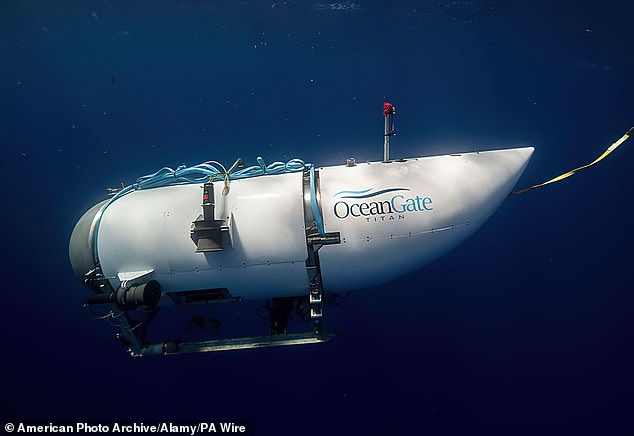
Photo of OceanGate Expeditions’ Titan submarine used to visit the Titanic wreck site, which imploded last year during its journey to the Titanic wreck site
‘As a seafarer, I am deeply disappointed in the system that is designed to protect not only seafarers, but also the general public.’
Lochridge said during his testimony that eight months after he filed an OSHA complaint, a caseworker told him the agency had not yet begun investigating it and that he had 11 more cases before him. By that time, OceanGate was suing Lochridge and he had filed a countersuit.
About 10 months after he filed the complaint, he decided to walk away. The case was closed and both lawsuits were dropped.
“I gave them nothing, they gave me nothing,” he said of OceanGate.
OSHA officials did not immediately respond to a request for comment Tuesday.
Earlier in the day, Lochridge said he had frequent disagreements with the company’s co-founder and felt the company was only interested in making a profit.
Lochridge was one of the most anticipated witnesses to appear before a committee. His testimony echoed that of other former employees Monday, one of whom described OceanGate chief Stockton Rush as volatile and difficult to work with.
“The whole idea of the company was to make money,” Lochridge said. “There was very little in the way of science.”
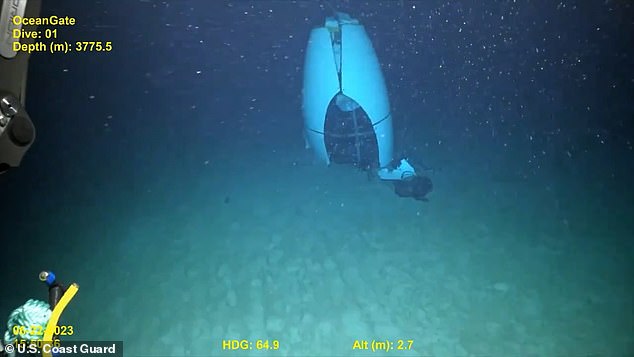
Images show remains of Titan submarine on Atlantic Ocean floor
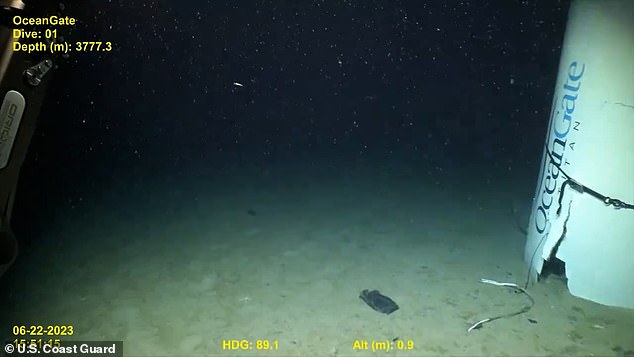
The accident sparked a global debate over the future of private subsea exploration
Rush was one of five people killed in the implosion. OceanGate owned the Titan and took him on several dives to the Titanic, dating back to 2021.
Lochridge’s testimony began a day after other witnesses painted a picture of a struggling company impatient to get its unconventionally designed vessel in the water. The accident set off a global debate about the future of private undersea exploration.
Lochridge joined the company in the mid-2010s as an experienced engineer and submarine pilot and said he quickly felt like he was being used to give the company scientific credibility. He said he felt like the company was selling him as part of the project “so people would come up and pay money,” and that didn’t sit well with him.
“I felt like I was a show pony,” he said. “I was forced by the company to stand up there and give lectures. It was hard. I had to go up there and give presentations. Everything.”
Lochridge pointed to a 2018 report that highlighted safety concerns surrounding OceanGate operations. He said that with all the safety concerns he saw, “there’s no way I would condone this.”
When asked if he had confidence in the way the Titan was being built, he replied, “No confidence at all.”
Staff turnover was very high at the time, Lochridge said, and leadership dismissed his concerns because they were more focused on “poor engineering decisions” and a desire to get to the Titanic as quickly as possible and start making money. He was eventually fired after raising safety concerns, he said.
“I didn’t want to lose my job. I wanted to do the Titanic. But I wanted to dive safely. That was on my bucket list too,” he said.
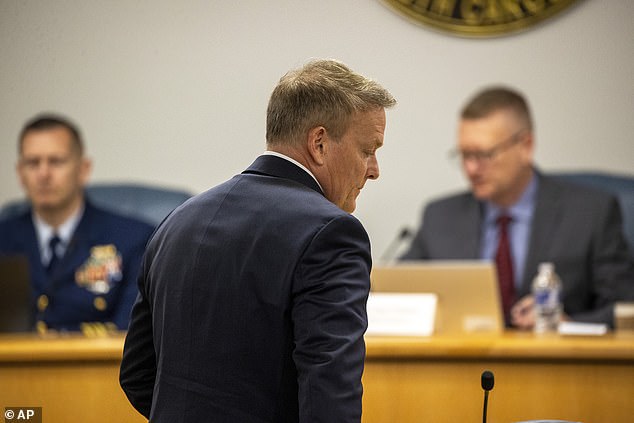
David Lochridge said he had raised safety concerns in 2018
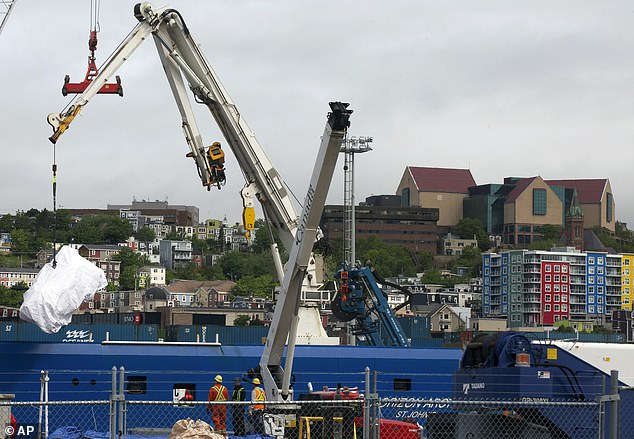
Debris from the Titan submarine, recovered from the ocean floor near the wreck of the Titanic, is unloaded from the vessel Horizon Arctic at the Canadian Coast Guard pier in St. John’s, Newfoundland, June 28, 2023
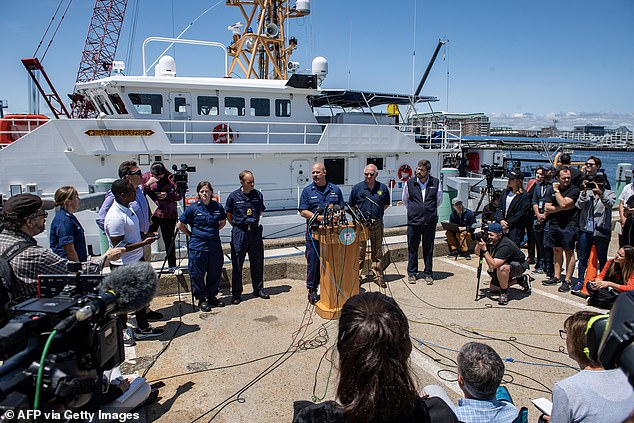
U.S. Coast Guard Captain Jamie Frederick speaks to reporters about the search for the Titan submarine on June 21 last year

OceanGate, based in Washington state, has suspended operations following the implosion.
Also on Monday, Tony Nissen, former OceanGate chief technical officer, said he felt “100 percent” pressure to launch the submarine.
He also said he refused to fly the Titan years ago because he didn’t trust the crew, and that he stopped the sub from going to the Titanic in 2019.
Coast Guard officials noted early in the hearing that the submarine had not been independently reviewed, as is customary. That and Titan’s unusual design drew scrutiny from the underwater exploration community.
During the submarine’s final dive on June 18, 2023, the crew lost contact after exchanging texts about Titan’s depth and weight during the descent. The support ship Polar Prince then repeatedly sent messages asking if Titan could still see the ship on its onboard display.
When the submarine was reported too late, rescuers rushed ships, planes and other equipment to an area about 435 miles (700 kilometers) south of St. John’s, Newfoundland. Wreckage from the Titan was subsequently found on the ocean floor about 330 yards (300 meters) from the Titanic’s bow, Coast Guard officials said.
According to a list compiled by the Coast Guard, OceanGate co-founder Guillermo Sohnlein and former chief scientific officer Steven Ross are scheduled to appear later in the hearing. Numerous Coast Guard officers, scientists, and government and industry officials are also expected to testify.

Tony Nissen, chief engineer for OceanGate, leaves after testifying at yesterday’s U.S. Coast Guard hearing

Pictured: Stockton Rush, Chief Executive Officer and founder of OceanGate, who died in the disaster

Pictured: Businessman Shahzada Dawood and his son Suleman who died on the ship
Among those not on the witness list is Rush’s widow, Wendy Rush, the company’s communications director. Lochridge said Wendy Rush played an active role in the company when he was there.
Asked about Wendy Rush’s absence, Leake said the Coast Guard does not comment on the reasons why specific individuals are not called to a particular hearing during ongoing investigations. She said it is common for a Marine Board of Investigation to “hold multiple hearings or take additional depositions for complex cases.”
OceanGate currently has no full-time employees but will be represented by counsel at the hearing, the company said in a statement.
The ongoing Marine Board of Investigation is the highest level of investigation into maritime accidents conducted by the Coast Guard. Once the hearing is completed, recommendations are submitted to the Commandant of the Coast Guard. The National Transportation Safety Board also conducts an investigation.
